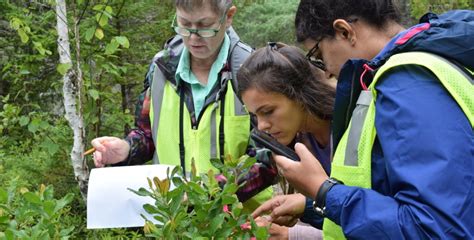Can you imagine a world where dogs play a crucial role in unearthing new species? Well, that’s exactly what happened when two unique truffles were recently discovered, thanks to the keen noses of some very special canine companions. Let’s delve into the enchanting realm of truffle hunting and how these remarkable fungi are captivating researchers and food enthusiasts alike.
“Receiving these samples was very exciting, especially because they looked very similar to the well-known edible European truffles Tuber macrosporumand Tuber aestivum,”
It all began with two distinct truffle species – Tuber canirevelatum and Tuber cumberlandense. The former, dubbed ‘dog-found’ truffle, was named in tribute to truffle dogs like Monza and her trainer Lois Martin who first unearthed it. On the other hand, Tuber cumberlandense got its name from the Cumberland Plateau where it was stumbled upon by Margaret Townsend and her trusty truffle dog, Luca.
Upon encountering T. canirevelatum, Martin sensed there was something extraordinary about this find. Its appearance and aroma were unlike anything previously documented in North America. Intrigued by this mystery, Martin decided to send it off for further analysis at the lab of Gregory Bonito, an esteemed associate professor specializing in plant sciences at MSU College of Agriculture and Natural Resources.
“Our analyses show that each has aromatic compounds found in some of the most valuable truffle species.”
Bonito and his dedicated research student Alassane Sow embarked on an investigative journey utilizing advanced DNA techniques to unravel the genetic makeup of these enigmatic fungi. Their findings not only identified these newfound truffles but also provided insights into their placement within the intricate tree of life.
The culinary world holds a deep fascination for truffles due to their rarity and exquisite flavors. These prized delicacies fetch exorbitant prices in global markets, making them highly sought after by chefs and food connoisseurs alike. Bonito emphasized that both Tuber species have significant economic potential, hinting at a promising future for North American truffles on the international stage.
“This particular species enjoys a symbiotic relationship with their host…”
Interestingly, efforts are already underway in Kentucky to cultivate Tuber cumberlandense under the auspices of Maker’s Mark distillery. This native truffle variety forms a symbiotic bond with white oaks – a key factor driving Maker’s Mark’s interest as they plan to integrate truffles into their whiskey-making process using oak barrels infused with these aromatic fungi.
While European truffles have long dominated cultivation practices and market demand, there is a growing trend towards exploring indigenous North American varieties for their distinct flavors and potential commercial value. Bonito highlighted that more individuals are venturing into cultivating native truffles as awareness spreads about their culinary significance.
“Truffles are some of the most mysterious and alluring fungi on the planet.”
Truffling – or hunting for wild-growing underground fungi – requires specialized skills honed by expertly trained dogs endowed with an exceptional sense of smell. These four-legged companions play an indispensable role in locating hidden treasures beneath forest floors or orchards where valuable tubers thrive undiscovered.
In collaboration with Matthew Smith from the University of Florida Department of Plant Pathology, Bonito has been at the forefront of studying native North American truffles since early 2010. Their groundbreaking research delves deep into understanding not just individual species but also tracing evolutionary links among various fungal groups like Pezizales encompassing morels alongside tantalizing tubers like our newfound friends here.
Through meticulous analysis involving gas chromatography techniques led by Randy Beaudry from MSU’s Department of Horticulture, fascinating revelations emerged regarding the volatile compounds responsible for each truffle’s distinctive aroma profile. This scientific exploration sheds light on how sensory cues influence our perception while savoring these gastronomic delights derived from nature’s hidden bounty.
“Our research reinforces…the public…trained truffle dogs.”
Bonito underscored that unveiling novel tuber species relies heavily on collaborative efforts between mycologists – those dedicated scientists delving into fungal realms – along with active engagement from communities worldwide eager to uncover nature’s secrets lying just beneath our feet or paws! With every dig guided by skilled paws sniffing out elusive scents wafting through earthy terrain comes new hope for unearthing more surprises awaiting discovery amidst lush forests or verdant landscapes teeming with life’s unseen wonders.









Leave feedback about this